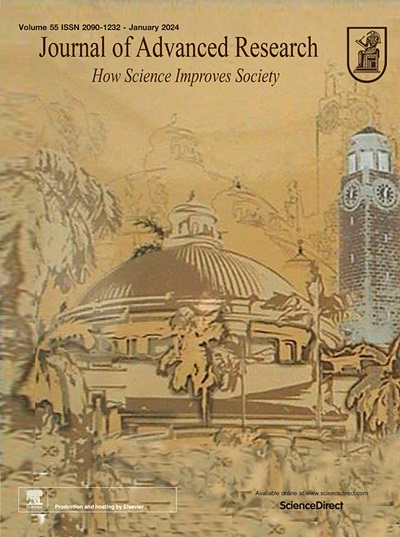ST6GALNAC1 介导的子宫内膜上皮的硅氨酰化促进了上皮与胚胎的附着。
IF 11.4
1区 综合性期刊
Q1 MULTIDISCIPLINARY SCIENCES
引用次数: 0
摘要
引言胚胎植入需要胚胎和接受胚胎的子宫内膜之间的协同作用。糖蛋白和糖结合蛋白参与了子宫内膜-胚胎的附着。Sialyl Tn(sTn)是一种截短的 O-聚糖,由 ST6 N-乙酰半乳糖氨肽 Alpha-2,6-Sialyltransferase1(ST6GALNAC1)催化,可被特异性 Sialic-acid 结合免疫球蛋白样凝集素(Siglecs)检测到。sTn-Siglecs 轴是否支持胚胎植入仍是未知数:本文旨在研究 ST6GALNAC1/sTn-Siglecs 轴在胚胎植入中的作用:方法:采用免疫组化方法分析人子宫内膜中的ST6GALNAC1和sTn。采用体外植入模型评估 ST6GALNAC1/sTn 对人类子宫内膜 AN3CA 细胞对 JAR 球形细胞接受性的影响。免疫沉淀结合质谱分析确定了子宫内膜细胞中被 sTn 修饰的关键蛋白。通过已发表的单细胞 RNA 测序(scRNA-seq)数据集分析了人类胚胎中的 Siglec-6。蛋白质相互作用实验验证了 Siglec-6 与 sTn 修饰的 CD44 之间的结合。将 St6galnac1 siRNAs 和抗 sTn 抗体注射到小鼠着床前的子宫角,以评估子宫内膜 St6galnac1/sTn 在胚胎着床中的作用。通过免疫荧光染色分析了小鼠胚胎中的Siglec-G。Siglec-G 的功能通过子宫角注射和蛋白质相互作用实验得到证明:结果:与非受孕阶段相比,受孕阶段的人和小鼠子宫内膜均表现出较高的 ST6GALNAC1 和 sTn 水平。ST6GALNAC1的过表达能显著增强AN3CA细胞对JAR球体的接受能力。抑制子宫内膜 ST6GALNAC1/sTn 会大大影响胚胎在体内的植入。CD44 被鉴定为两种动物子宫内膜细胞中 sTn 的载体。在胚胎滋养层中表达的Siglec-6和Siglec-G可促进胚胎附着,这可能是通过与sTn修饰的CD44结合实现的:结论:ST6GALNAC1调控的子宫内膜中的sTn通过与滋养层Siglec的相互作用帮助胚胎附着。本文章由计算机程序翻译,如有差异,请以英文原文为准。
ST6GALNAC1-mediated sialylation in uterine endometrial epithelium facilitates the epithelium-embryo attachment
Introduction
Embryo implantation requires synergistic interaction between the embryo and the receptive endometrium. Glycoproteins and glycan-binding proteins are involved in endometrium-embryo attachment. Sialyl Tn (sTn), a truncated O-glycan, is catalyzed by ST6 N-Acetylgalactosaminide Alpha-2,6-Sialyltransferase 1 (ST6GALNAC1) and can be detected by specific Sialic-acid-binding immunoglobulin-like lectins (Siglecs). Whether the sTn-Siglecs axis supports embryo implantation remains unknown.
Objectives
This paper aims to study the role of ST6GALNAC1/sTn-Siglecs axis in embryo implantation.
Methods
ST6GALNAC1 and sTn in human endometrium were analyzed by immunohistochemistry. An in vitro implantation model was conducted to evaluate the effects of ST6GALNAC1/sTn on the receptivity of human endometrial AN3CA cells to JAR spheroids. Immunoprecipitation combined with mass spectrometry analysis was carried out to identify the key proteins modified by sTn in endometrial cells. Siglec-6 in human embryos was analyzed by published single-cell RNA sequencing (scRNA-seq) datasets. Protein interaction assay was applied to verify the bond between the Siglec-6 with sTn-modified CD44. St6galnac1 siRNAs and anti-sTn antibodies were injected into the uterine horn of the mouse at the pre-implantation stage to evaluate the role of endometrial St6galnac1/sTn in embryo implantation. Siglec-G in murine embryos was analyzed by immunofluorescence staining. The function of Siglec-G is evidenced by uterine horn injection and protein interaction assay.
Results
Both human and murine endometrium at the receptive stage exhibit higher ST6GALNAC1 and sTn levels compared to the non-receptive stage. Overexpression of ST6GALNAC1 significantly enhanced the receptivity of AN3CA cells to JAR spheroids. Inhibition of endometrial ST6GALNAC1/sTn substantially impaired embryo implantation in vivo. CD44 was identified as a carrier for sTn in the endometrial cells of both species. Siglec-6 and Siglec-G, expressed in the embryonic trophectoderm, were found to promote embryo attachment, which may be achieved through binding with sTn-modified CD44.
Conclusion
ST6GALNAC1-regulated sTn in the endometrium aids in embryo attachment through interaction with trophoblastic Siglecs.
求助全文
通过发布文献求助,成功后即可免费获取论文全文。
去求助
来源期刊

Journal of Advanced Research
Multidisciplinary-Multidisciplinary
CiteScore
21.60
自引率
0.90%
发文量
280
审稿时长
12 weeks
期刊介绍:
Journal of Advanced Research (J. Adv. Res.) is an applied/natural sciences, peer-reviewed journal that focuses on interdisciplinary research. The journal aims to contribute to applied research and knowledge worldwide through the publication of original and high-quality research articles in the fields of Medicine, Pharmaceutical Sciences, Dentistry, Physical Therapy, Veterinary Medicine, and Basic and Biological Sciences.
The following abstracting and indexing services cover the Journal of Advanced Research: PubMed/Medline, Essential Science Indicators, Web of Science, Scopus, PubMed Central, PubMed, Science Citation Index Expanded, Directory of Open Access Journals (DOAJ), and INSPEC.
 求助内容:
求助内容: 应助结果提醒方式:
应助结果提醒方式:


